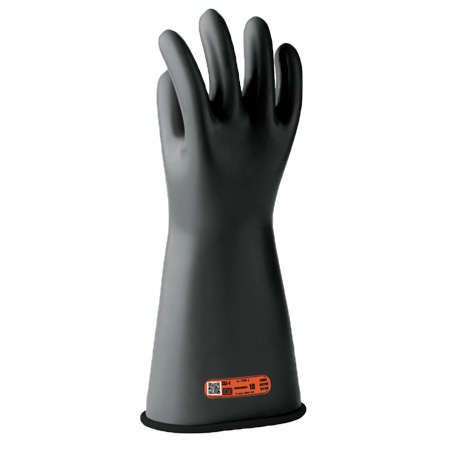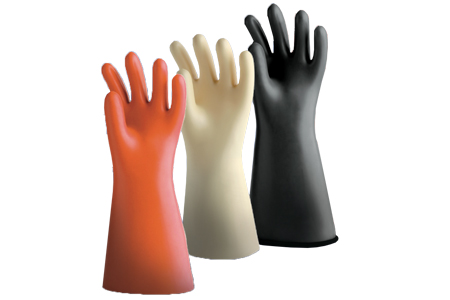
|
|
| home | contact | team t&d | group websites | markets | exports | blog |
 |
|
CATU Dexteri+ Electrical Insulating Gloves For Electrical Engineers, Linesmen & Cable Jointers
By Chris Dodds on 19th October, 2015

CATU Dexteri+ Electrical Insulating Gloves
Excellent Dexterity With Added Benefits for Electrical Engineers, Linesmen & Cable Jointers
CATU Electrical
Established over 95 years ago in 1919, CATU is today the global leader in the manufacturing of electrical safety materials and equipment for the transmission and distribution networks of electrical energy.
CATU is active in over 100 countries over 5 continents.
CATU Electrical Safety Equipment protects Senior Authorised Persons (SAP’s), Linesmen, Cable Jointers and Electrical Engineers during electrical construction and maintenance work on underground cables, substations, switchgear and overhead lines - typical applications include LV-HV cable jointing, fuse pulling, racking circuit breakers, electrical switching and live working.
Pictured: CATU ASTM Dexteri+ Insulating Rubber Gloves

T&D distribute the full range of CATU Dexteri+ insulating gloves.
The CATU Dexteri+ Range - 5 Key Features And Benefits
The CATU Dexteri+ range of insulating gloves are different to other insulating gloves for 5 reasons.
1. Design - The ergonomic, bent finger design of the CATU Dexteri+ insulating gloves reduces finger fatigue. This reduces the stress put on the wearers fingers meaning work can carry on for longer periods than with standard designed rubber insulating gloves. The CATU Dexteri+ gloves are manufactured using a specially made porcelain former ensuring the CATU Dexteri+ gloves not only have a superior design but they are also unique.

2. Material - The CATU Dexteri+ range of insulating gloves are made from latex rubber and other compounds. This material is not only more flexible but is softer and more durable. These qualities mean the rubber is thinner, improving usability. As well as being easier to use, the CATU Dexteri+ gloves are subject to many tests such stretch, age, abrasion, puncture and the dielectric properties. As these insulating rubber gloves are life protecting products, they are tested individually with each test result being saved.
3. Dual Layer - The CATU Dexteri+ insulating gloves are dual layer. This safety measure allows the wearer to instantly tell if the glove is damaged as the beige inner layer will show through to the outer layer. If the inner layer can be seen, the insulating glove should be replaced to ensure the user's safety.
4. Rolled Cuff - The rolled cuff is a new feature of the standard Dexteri+ electric insulating gloves and the Dexteri+ ASTM rated insulated gloves. The rolled cuff makes the insulating gloves easier to wear and put on, more comfortable and fits around the wearers clothes better than the standard 'cut cuff'.

5. QR Codes - CATU are pleased to announce that each of their rubber insulating gloves in the Dexteri+ range now features a Quick Response (QR) code. As mentioned in point 2, each glove is tested individually to ensure maximum quality control. When scanned, the QR Code on each insulating glove will take the user to the a specific page containing theresults from that gloves safety test. On this page, the user is shown a certain amount of information, taken from the quality control test results. The user can then go on to download the pdf file containing the entire set of results for that actual pair of insulating gloves.

| How Does The QR Code Work? | |
| 1. The CATU Dexteri+ QR Code Is Scanned Using a Barcode Reader On A Smartphone Or Similar Device | |
 |
|
| 2. The User Is Then Taken Straight To The QR Code Landing Page On The CATU Website | |
 |
|
| 3. The User Then Has The Option To Download The CATU Dexteri+ Product Test Results As A PDF Document | |
 |
|
CATU Dexteri+ Insulating Gloves - Overview
In summary, there are 3 different types of glove within the CATU Dexteri+ range of insulating gloves distributed by T&D.
- Electric Insulating Gloves - Compliant with the IEC 60903/EN 60903 standard. This glove is worn under a leather overglove that is supplied by T&D and a cotton underglove.
- Electric Insulating Gloves (Mechanical Strength Model) - Compliant with the IEC 60903/EN 60903 standard. These gloves require no leather overglove and can be worn with just a cotton underglove to provide mechanical protection.
- ASTM Insulating Rubber Gloves - These insulating gloves are compliant with the ASTM D 120 standard. This American standard is recognised largely in America and Canada and is also the choice for customers that are not familiar with IEC standards.

- Further Reading
11kV-33kV Voltage Detection Using CATU CC765-10/36 For Substations, Cables & Overhead Lines
Invitation
Thorne & Derrick are inviting you to join LinkedIn’s fastest growing Discussion Group : Low & High Voltage Power, Cabling, Jointing, & Hazardous Area Electricals (LV-HV).
Discussion subjects include cable installations, cable jointing, electrical substation, overhead line and electrical construction at LV, 11kV, 33kV and EHV.
Network, engage and promote your profile, company or products with over 10,000 influencers.
 |
Category: Electrical Safety & Arc Flash
Sort by Category:
- #ThrowBackThursday
- 3M Scotch Tapes
- ABB Power Products
- Business
- Cable Accessories
- Cable Cleats & Cable Ties
- Cable Containment LV HV
- Cable Crimping & Cutting Tools
- Cable Jointer Training Courses
- Cable Jointing - PhotoBlog
- Cable Labelling & Marking
- Cable Laying & Cable Pulling
- Cable Transits & Duct Sealing
- Company Updates
- Earthing & Lightning Protection
- Electrical Equipment HV
- Electrical Equipment LV
- Electrical Safety & Arc Flash
- Exports
- Flexible Conduit Cable Management
- Hazardous Area Electricals & Lighting
- HV Cable Jointing & Terminating
- LV Cable Jointing & Terminating
- Nexans Euromold Cable Accessories
- Plugs & Sockets
- Power Distribution & Feeder Pillars
- Prysmian FP Cables
- PV Solar Farms
- Rail
- T&D History Blog
- Terms & Conditions of Sale & Purchase
Tweets by @ThorneanDerrick






























